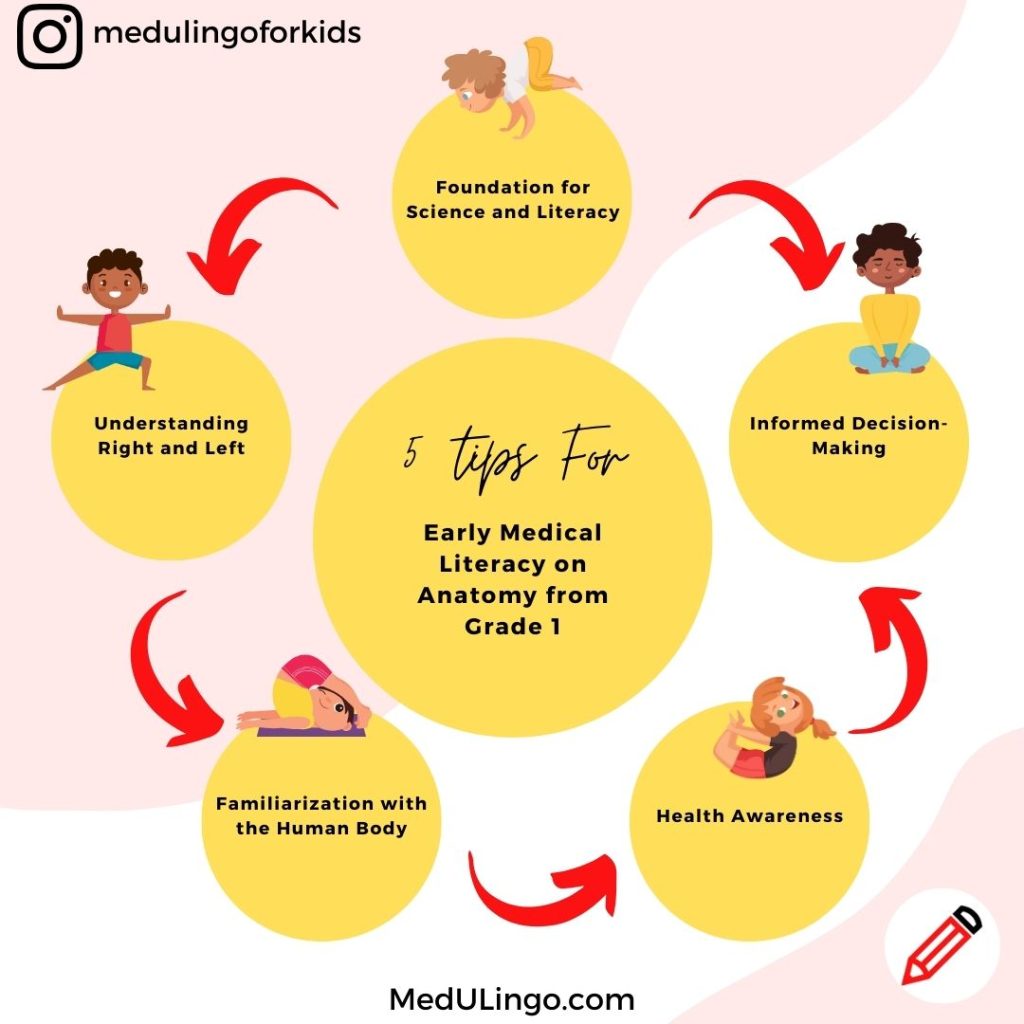In the realm of education, the significance of anatomy instruction from an early age cannot be overstated. As children embark on their academic journey, understanding the fundamentals of human anatomy lays the foundation for health awareness and informed decision-making throughout life. Grade 1 marks a pivotal stage in a child’s development, making it an opportune time to introduce basic anatomy concepts and foster a lifelong appreciation for the human body. This article delves into the reasons why medical literacy instruction on anatomy should commence in Grade 1 with an activity book like A to Z Findable Anatomy, highlighting the benefits and implications for young learners.

Understanding Right and Left:
One of the fundamental aspects of anatomy education in Grade 1 is introducing children to the concept of right and left. While the exact age at which children grasp this distinction can vary, many begin to understand the difference between right and left between the ages of 4 and 6 years old. By incorporating simple activities and visual aids that reinforce the concepts of right and left, educators can lay the groundwork for more complex anatomical discussions in later grades. Understanding right and left is not only crucial for anatomical comprehension but also for developing spatial awareness and coordination skills.
Early Familiarization with the Human Body:
Grade 1 serves as an ideal starting point for introducing children to the basics of human anatomy. At this age, children are naturally curious about their bodies and eager to learn about how they function. Anatomy instruction in Grade 1 can cover foundational concepts such as the major body parts, organs, and their basic functions. By using age-appropriate resources, interactive activities, and engaging storytelling, educators can demystify the human body and instill a sense of wonder and appreciation for its complexity.
Promoting Health Awareness:
Introducing anatomy education in Grade 1 not only fosters an understanding of the human body but also promotes health awareness. By learning about the body’s structures and functions, children gain insights into the importance of healthy habits, proper nutrition, and physical activity. Anatomy instruction empowers children to take ownership of their health and well-being, laying the groundwork for a lifetime of informed decision-making and self-care practices.
Building a Foundation for Science and Literacy:
Anatomy education in Grade 1 lays the foundation for broader science and health literacy skills that children will develop in subsequent grades. By cultivating a curiosity for the human body and its intricacies, educators spark an interest in science and health-related topics that can extend into other areas of study. Understanding anatomy provides a framework for exploring topics such as physiology, biology, and health sciences in more depth as children progress through their academic journey. Moreover, early exposure to anatomical concepts nurtures critical thinking skills and prepares children to engage with complex scientific concepts in the future.
Empowering Informed Decision-Making:
Anatomy education in Grade 1 empowers children to make informed decisions about their health and well-being from an early age. By understanding how their bodies work and the importance of proper care, children can take proactive steps to maintain their health and prevent illness. Anatomy instruction instills a sense of responsibility and agency in children, enabling them to advocate for their health needs and make informed choices throughout life.
Start Medical Literacy on Anatomy from Grade 1
In conclusion, medical literacy instruction on anatomy starting in Grade 1 offers numerous benefits for young learners, including a deeper understanding of the human body, promotion of health awareness, and cultivation of foundational science and health literacy skills. By introducing anatomy education at an early age with a resource like A to Z Findable Anatomy, educators lay the groundwork for a lifetime of curiosity, informed decision-making, and appreciation for the remarkable complexities of the human body.
===
Interested in teaching medical literacy pain free? Shop medical literacy resources!

This article was drafted by ChatGPT and edited by Joan Lee Tu, the founder of MedULingo.com.
You may also be interested in the following:
A to Z Medical Literacy: Book of Findable Anatomy
The Benefits of Introducing Medical Literacy on Anatomy in Grade 1
The Importance of Early Medical Literacy on Anatomy from Grade 1
Formalin sessions or 3D apps: Teaching anatomy in the modern age

